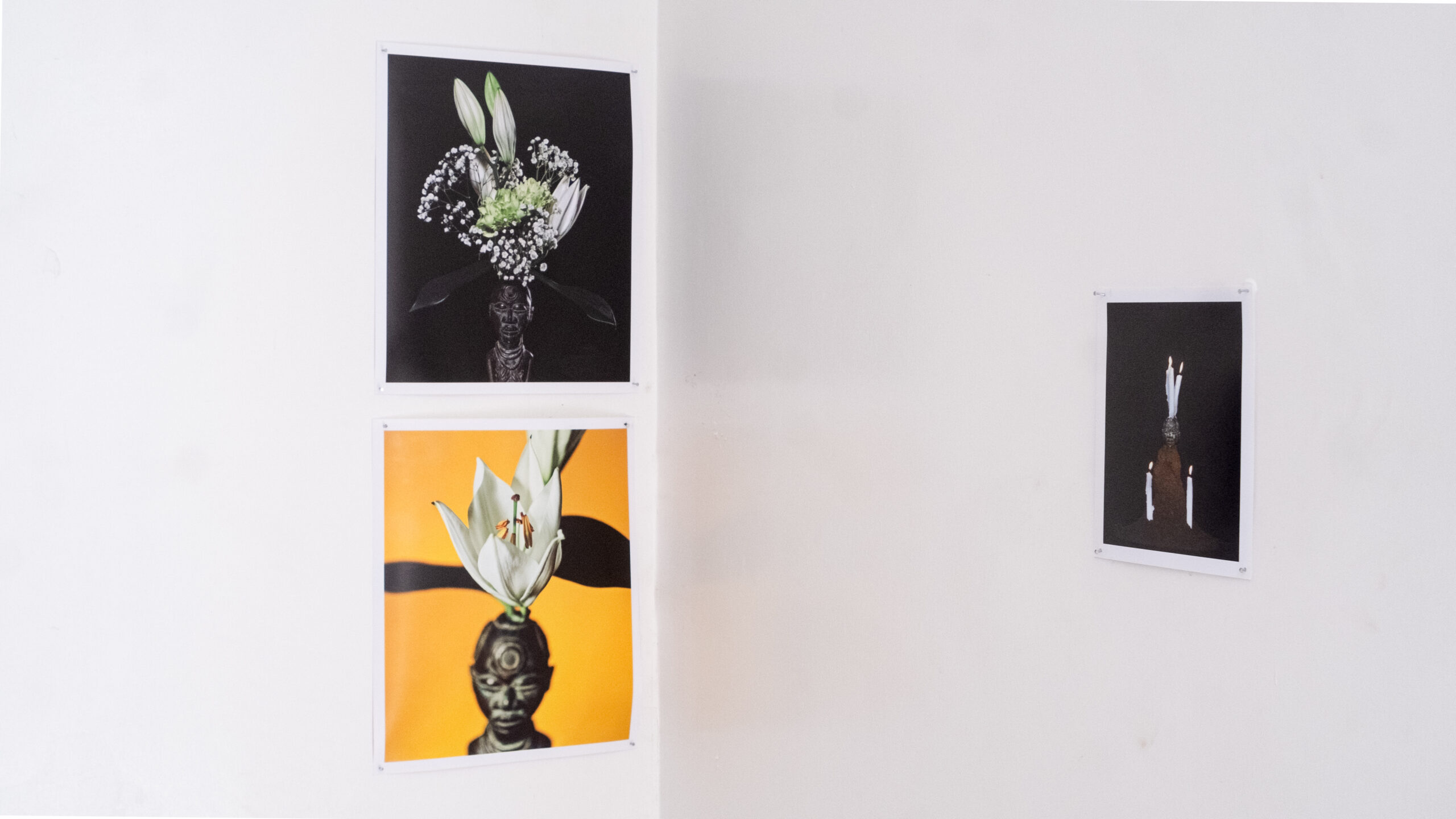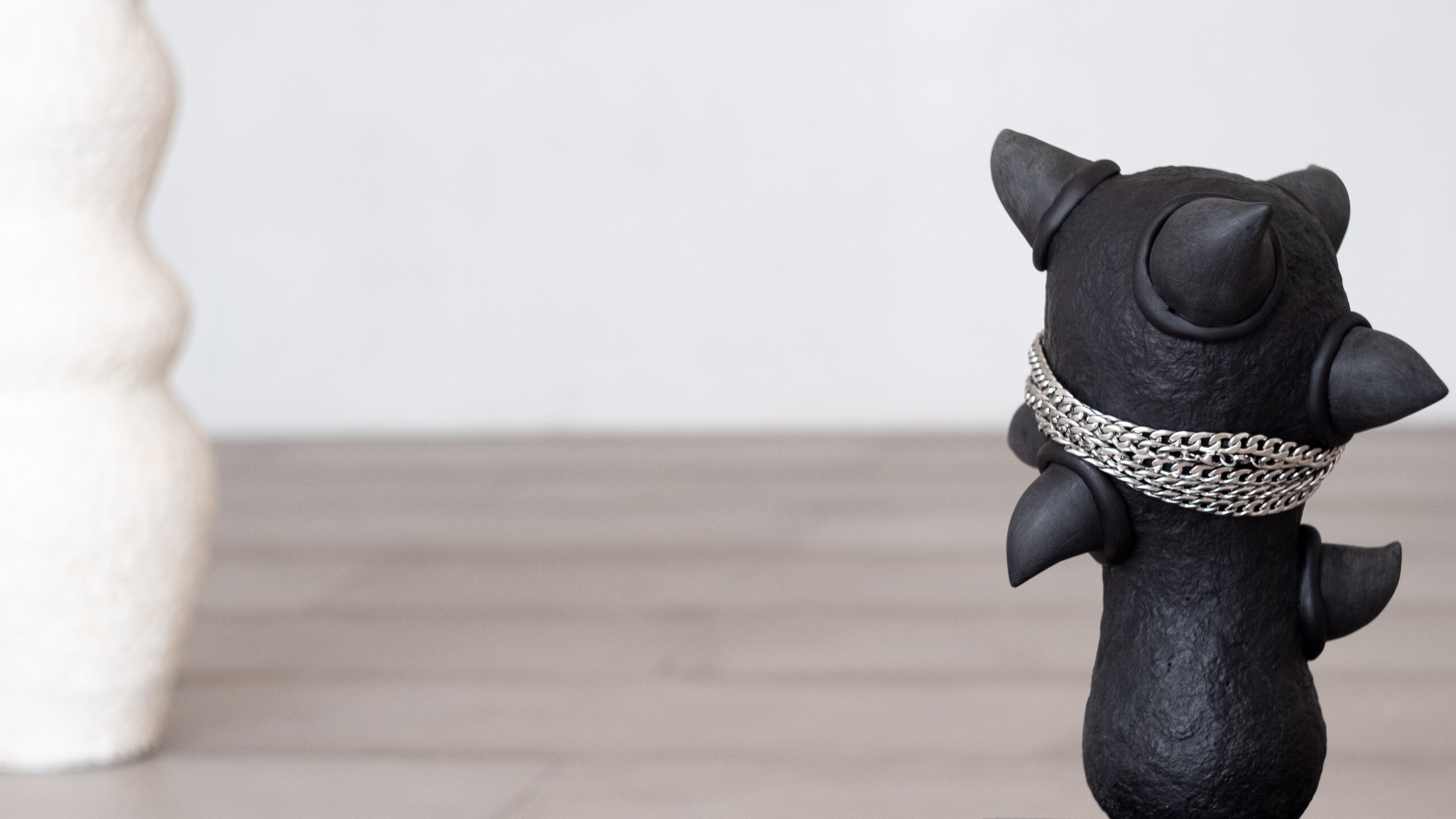
Kadara Enyeasi thinks he’s destined to be an architect. He tells me this as we are sitting outside Treehouse, an experimental art space in Lagos set up by his friend and fellow artist Wura Natasha-Ogunji, where his most recent exhibition, titled because this must be shown, is part of Lagos Art Week. For the one hour, we talk, and Enyeasi points out flaws in various buildings around me noting that the leftover of colonialism unfortunately means Nigerians are still building houses that are unsuitable for their climate. ‘‘I think there is a problem with architecture in Nigeria.’’ Enyeasi shares. ‘‘I think we have lost so many traditional techniques that still work. That even the white man still copies today. Like the idea of sun-shading.’’ He pauses to point at a building beside us. ‘‘It is a very African thing, but because the white man was the one that generalized it, sort of modernized it, we think that he is the owner of it.’’
There is an animated excitement of someone speaking about something they enjoy talking about as he points at the roof of a bank almost directly opposite where we are seated on the seventh floor. ‘‘It’s a stupid material, absorbs heat, and doesn’t work for us.’’ This isn’t the whining of a pessimistic man; these are all legitimate concerns of a man who is knowledgeable about what he is saying. He cites some of his biggest inspirations and references throughout the conversation. That he is knowledgeable about architecture isn’t shocking. Enyeasi studied architecture at the University of Lagos – he tells me that despite this, he hasn’t been back yet to pick up the degree he earned. The story of earning a degree in a subject only to pursue a passion project isn’t new in 2023 – it’s a standard, and it’s expected, especially of an artist out from West Africa. What isn’t expected, however, is earning a degree in what you think you are meant to be, destined to be if Enyeasi’s words are to be believed, only to pick a whole other career while convinced it isn’t what you will end up doing long term. It becomes even more interesting when you realize that Enyeasi didn’t just switch from architecture to art; the journey had several stops. And it seems there will be even more stops in the future. Two things are key to understanding this: the first is that Enyeasi cares more about the process and journey of a thing than he does the destination, and the other is that Enyeasi is an artist who leaves you with more questions than he does answers.

Born and raised in Lagos, Nigeria, Enyeasi’s first inclination into both architecture and art was in secondary school when he was praised by his technical drawing teacher – an interesting nexus of architecture and art that perhaps was a sign of what was to come. Powered by these, Enyeais sought admission to study architecture at the University of Lagos. However, while here, Enyeasi picked up photography in equal parts as a means to earn extra income while studying and, in part, out of fascination. Soon, that fascination turned into curiosity, which turned inward, and he became curious about his body, how it moved, and how it looked, which gave birth to possibly his first practice as an artist: self-portraiture.
‘‘It was more about coming to terms with myself and my sexuality,’’ Enyeasi tells me about his time exploring self-portraiture. ‘‘At the time, this was in 2010, I had enough time on my hands. It was a thing of me studying myself and making shapes with my body. The initial self-portraits were made in my bedroom; I never had a studio to begin with. It was really about understanding ideas in my head, my general worldview, how I see the world, how I wanted the world to see me and how I was already in the world.’’ Today, Enyeasi has all but moved on from self-portraiture and even photography.
‘‘When I started, I was making a self-portrait, and I was doing a lot of nudes; I think that was political because people don’t want to talk about equality in Nigeria, but after a while, it became a burden on me because people were identifying me as that person., I just did because, in some ways, I was trying to figure out who I was as a person, create this space where I can work and put out work.’’ I’m tired of figuration. It even shows in my photography; I have almost given up these days.’’

Because this must be, Enyeasi’s most recent presentation of work finds itself the nexus of everything that Enyeasi has ever done. It features his recent exploration into painting, sculpture and photography, all done in an expansive way that seemingly unfolds both for the artist and the art itself. ‘‘It’s not entirely an exhibition.’’ Enyeasi corrects me when I ask him to tell me about it because this must be. ‘‘It’s a presentation of new works. These works came out of a body of work I had done last year. I sort of had time on my hands and started experimenting with materials I have never worked with in my practice, like paper mache.’’ Because this must be a spin-off of sorts from the larger body of work, Wisdom often arrives as a warning. The series takes inspiration from a passage in Lewis Caroll’s book Alice in Wonderland, where Alice cries out as she is submerged in a pool of her tears. ‘‘I watched it last year. I was thinking about how she was in that room, and she ate this thing, and she became big, and then when she ate the other part of it and became smaller, she was submerged in a pool of her tears, and she was so angry, and she said this thing about how her curiosity had brought to this point and at that time, I could relate. I felt underappreciated and undervalued. I was also going through some rocky things in my personal life and my relationships. So yeah.’’
For the series, Kadara Enyeasi uses materials he had never used elsewhere. Chief among them is paper mache, which he shares he got into after he had visited a friend who was beginning to explore Japanese calligraphy. ‘‘He was practising shodu, this Japanese calligraphy and that’s how that black headpiece came to be. It’s called Every silence has consequences.’’ It is the headpiece he was working on when Wura-Natasha Ogunji visited him and insisted he showcase his new work.
‘‘Whenever I am trying to explain my work, I don’t explain it while I’m working. I’m more into the process, but I don’t conceptualize it. I just get into it.’’ Enyeasi shares speaking on his process. ‘‘I love taking things from architecture and applying them to art. Like Fela would say before he starts singing., let’s enter this underground spiritual ground, and I like the idea of that. Sort of creating something and making the rules as you go. If I make a grid and I put a dot here, but I don’t do the same here, what then? It’s like pseudo-math.’’

The result is a largely minimalist collection of work that draws on several sources, including Nigerian traditional mythology. With one piece, Enyeasi began an exploration of the journey of Aynanywu, the sun god in Igbo mythology, but halfway realized he was more interested in the action sequence of one part of the story and focused on the result.
‘‘I saw something online about how Africans can tell when it is about to rain; we can smell rain. So I was trying to create a system of how to tell when it is about rain., But along the way, I got distracted. So, I started pouring things on it. I was not keen on showing it; it fell during the presentation, but Wura was like, we should. It breaks the minimalism thing going on, so we did.’’
Staring at the presentation that is because we must be, it’s clear that, much like the artist behind it, the work has become all that it will. Like the headpiece, which fell and transformed into a whole other story, much of this presentation and Enyeais himself is an ongoing story that is powered by curiosity and a love for the process. And it is that curiosity and a willingness to be honest with self that I believe makes Enyeasi a brilliant artist and, maybe someday soon, a fascinating architect.
Words by Desmond Vincent. Images courtesy the artist.






